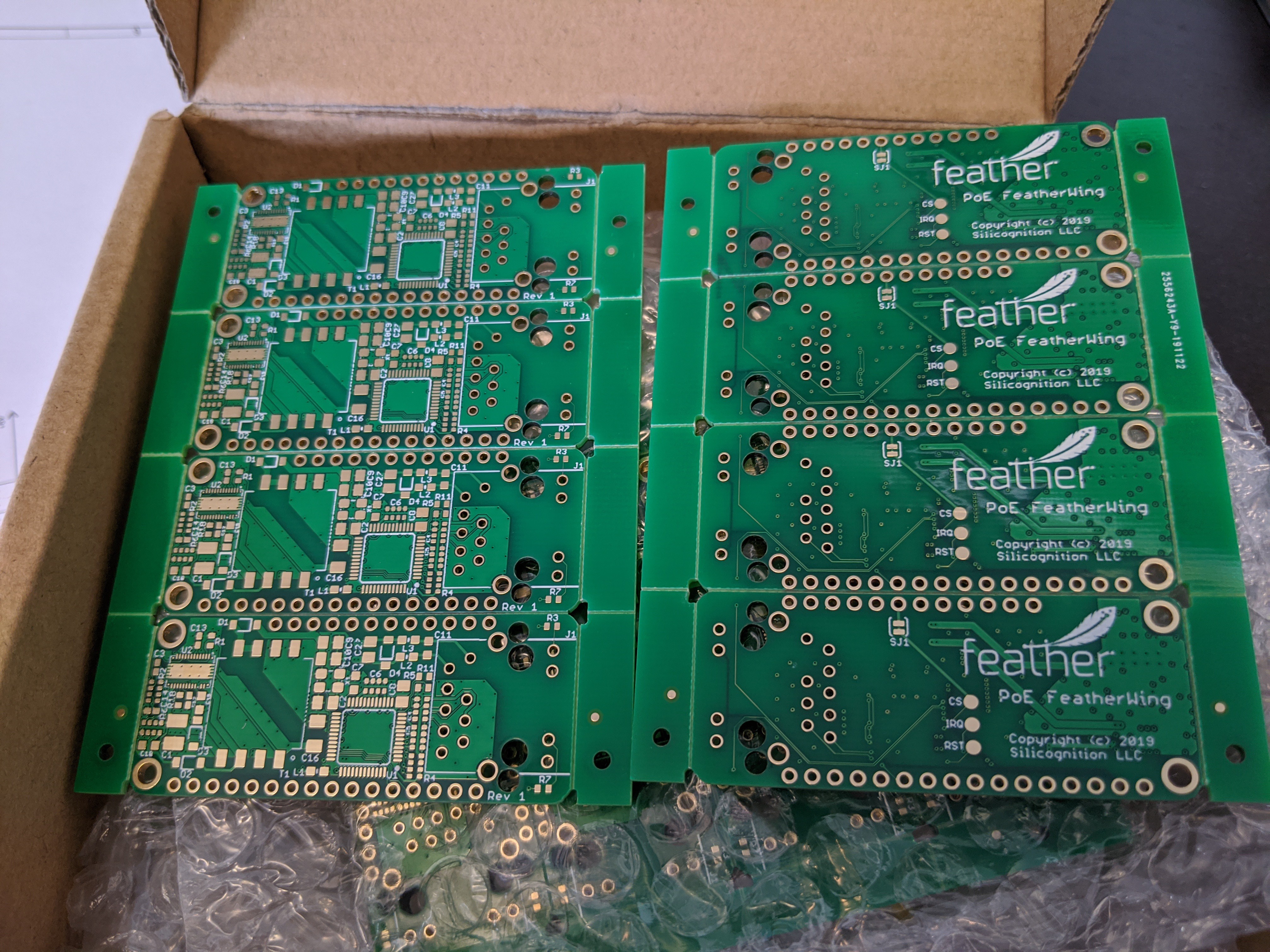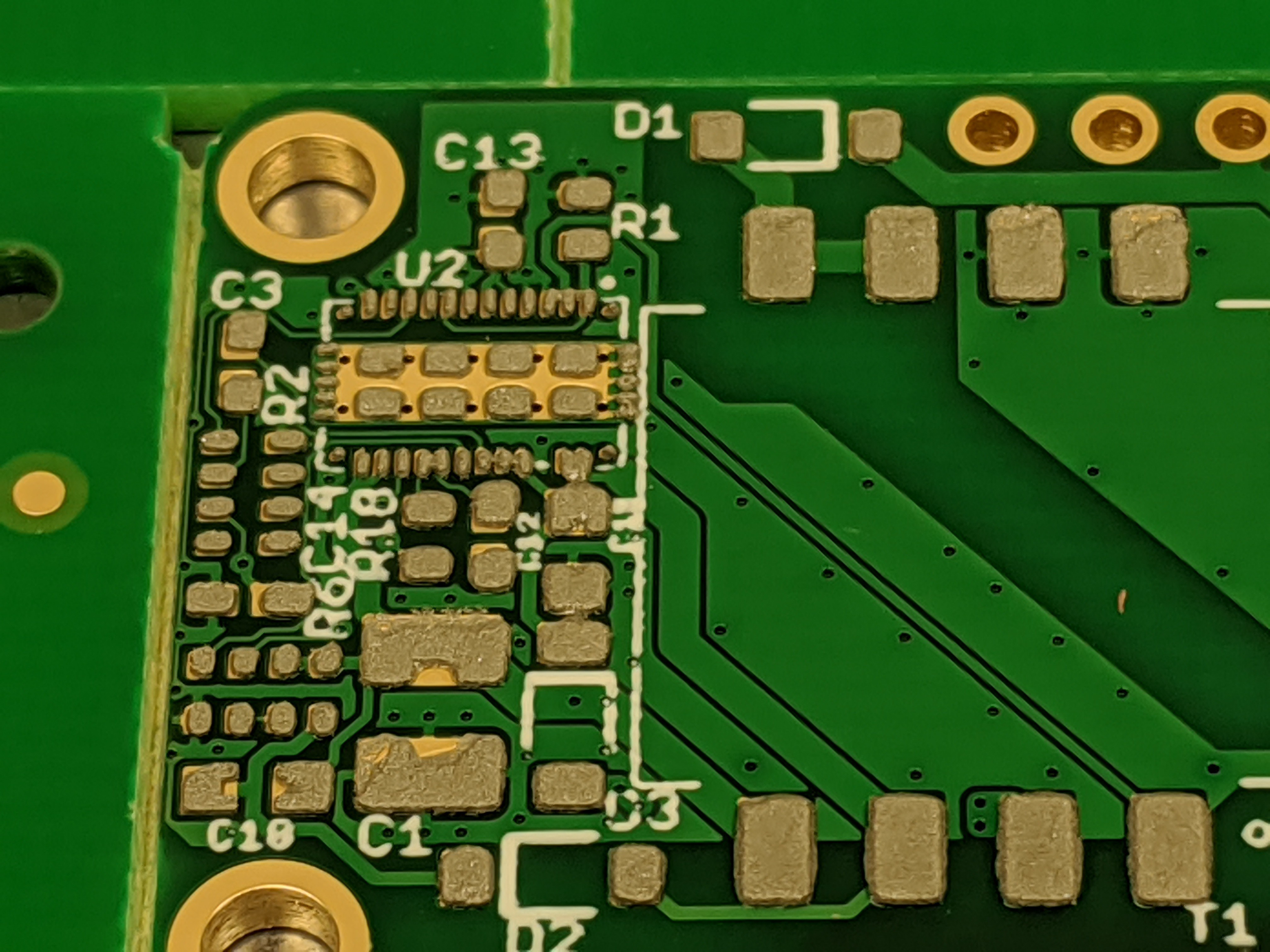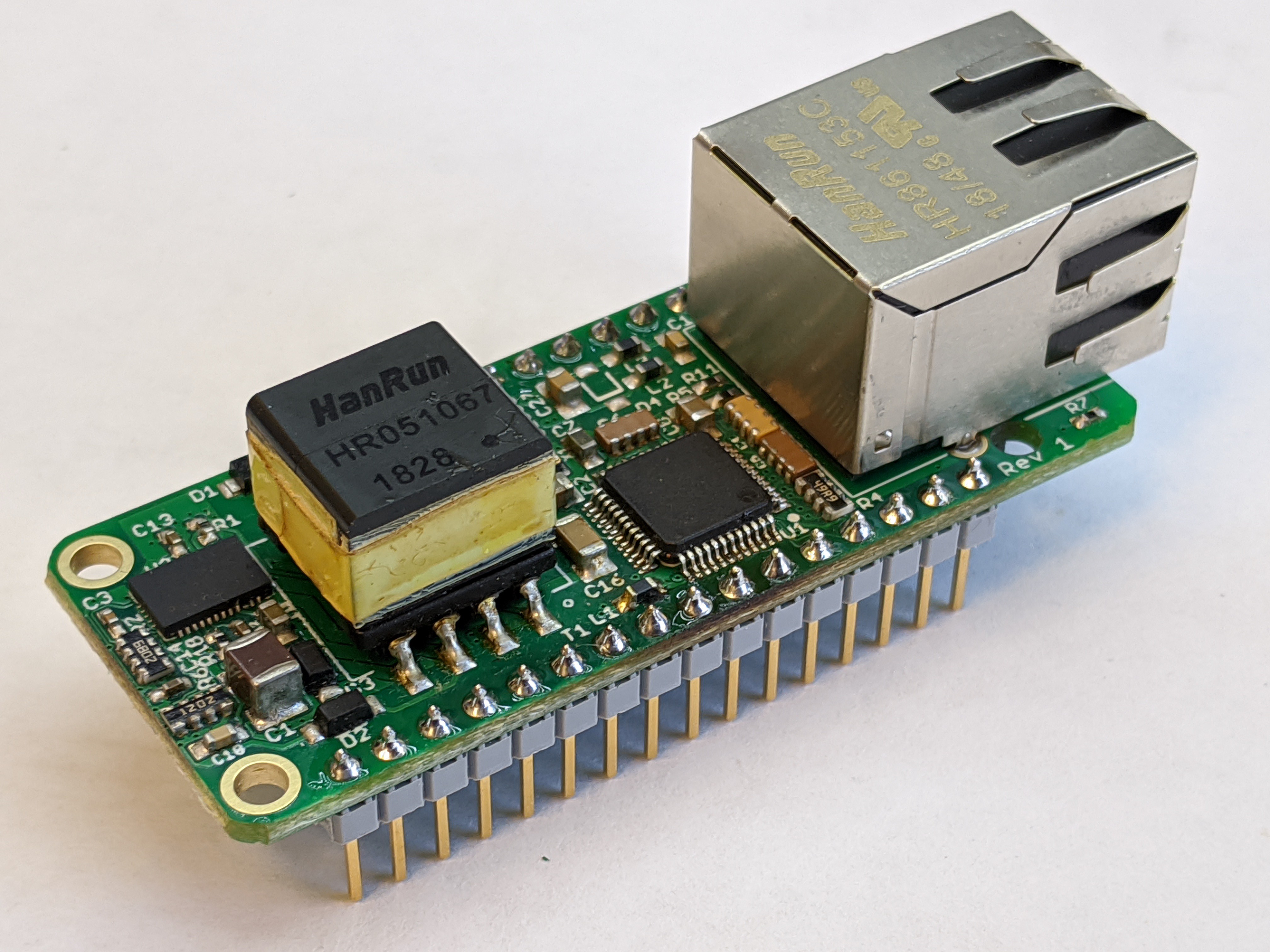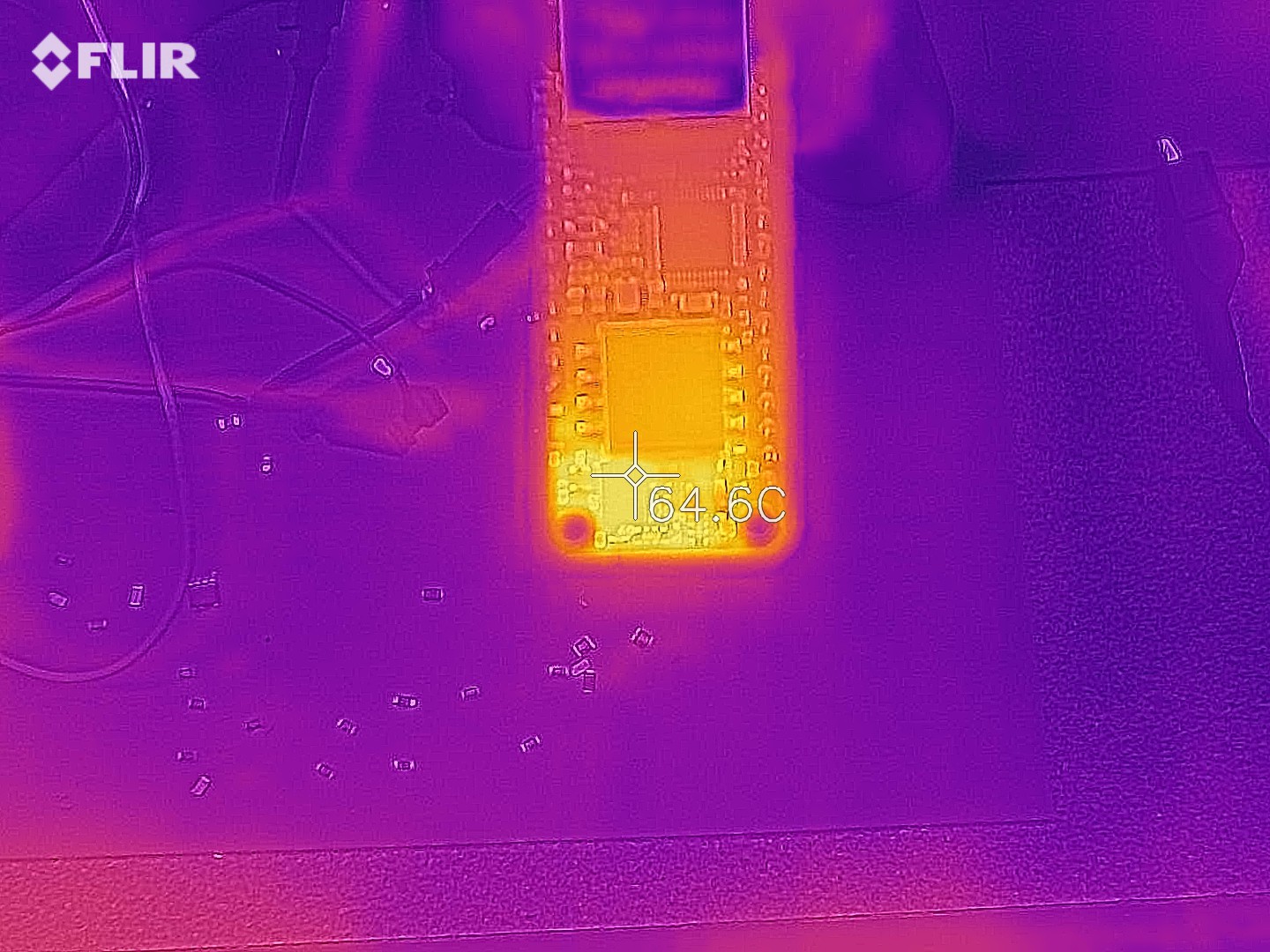The PCBs arrived from JLCPCB, looking excellent as usual:

Time to build some prototypes! So I headed to the Tinkermill to assemble two of them:


Then through reflow:

Looks pretty clean, except for some shorts on the Wiznet W5500. Also, odd that the tape on the flyback transformers was adversely affected, since it's supposed to be able to deal with lead-free reflow. This was not the case with the professionally built LiFePO4wered/ESP32 prototypes that use the same flyback transformer, so I'm chalking it up to the lower quality desktop reflow oven I used.
After cleanup and final through-hole assembly, I had some prototypes to test!

First thing to try: do we get PoE power?

The answer is yes, we are getting power! The output voltage shown on the load is low because I'm measuring through the wiring, at the PCB the voltage was above 4 V at 1 A load.
Heat generation is reasonable, concentrated on the secondary side Schottky diode, while the PoE controller stays pretty cool:

Oddly, things are worse at low load. It looks like the primary side regulation control loop isn't working great and the output voltage would go way too high (around 15 V) at low and no load. The picture below shows the situation with just enough load to keep things in control:


Low load makes the PoE controller run way hotter. Turns out this is because just like the output voltage went way high, the auxiliary voltage that feeds the chip does the same thing, and it was actually exposing the chip to out-of-spec voltages. More testing at no load eventually killed the chip.
Looks like I still have work to do to get this to behave properly. :) Tuning the control loop tends to be a slow, labor intensive process of trial and error. Still, I find this a promising start.
Only after I get a stable output voltage will I hook this up to a Feather to test the Ethernet controller part, since this is powered by the Feather's 3.3 V. Since most Feathers from Adafruit seem to use an AP2112 LDO, I'll have to make sure the PoE voltage doesn't go above 6 V since that is its maximum operating voltage.
 Patrick Van Oosterwijck
Patrick Van Oosterwijck
Discussions
Become a Hackaday.io Member
Create an account to leave a comment. Already have an account? Log In.